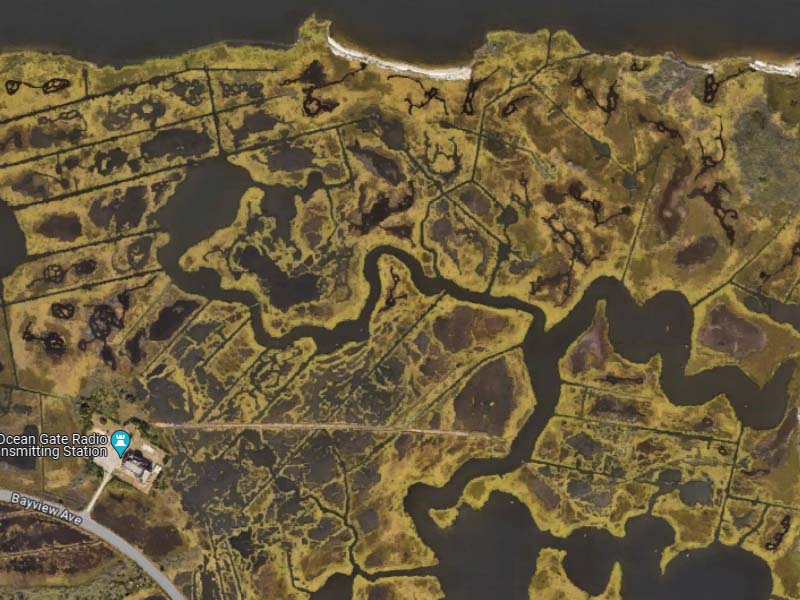Historical Report on the New Jersey Ocean Gate Radio Transmitting Station
Nestled deep in the marshes along Barnegat Bay, a solitary structure stands shrouded in mystery. The New Jersey Ocean Gate Radio Transmitting Station, once a beacon of modern communication, now whispers secrets of the past to the few who venture near. This enigmatic building, abandoned and seemingly forgotten, holds tales of urgent wartime messages, groundbreaking technological feats, and the silent evolution of global connections that shaped the world as we know it today.

The New Jersey Ocean Gate Radio Transmitting Station, established in the early 20th century, played a crucial role in the development and expansion of wireless communication in the United States. Located in Ocean Gate, New Jersey, this facility was pivotal in facilitating transatlantic communications, especially for naval and commercial purposes.
The Ocean Gate Station was established as part of a broader initiative by the United States to enhance its communication capabilities across the Atlantic. During an era when radio technology was rapidly evolving, the station was set up to ensure that the U.S. Navy and merchant ships could maintain reliable communication with the mainland, regardless of their location. This facility was equipped with powerful transmitters capable of sending signals over vast distances, overcoming the challenges posed by the Earth’s curvature and atmospheric conditions.
The station was notable for its use of cutting-edge technology during its operational years. It employed large antenna arrays and high-power transmitters, which were state-of-the-art at the time. These technologies enabled the station to handle communications not only for maritime operations but also for broadcasting services. The strategic location of Ocean Gate, near the coast yet secluded enough to avoid radio frequency interference from urban centers, made it an ideal choice for such a facility.

The arrays, clearly visible from the Route 37 bridge, were removed in 2017.
During World War II, the importance of the Ocean Gate Station increased significantly. It served as a critical hub for military communications, providing vital links between the United States and its forces deployed in Europe and other theaters of the war. The facility underwent several upgrades during this period to handle the increased volume of traffic and the need for secure communications.

In the post-war era, the station continued to operate, adjusting to the changes in communication technology and the shifting needs of its users. With the advent of satellite communications and more advanced technologies in the latter half of the 20th century, the role of traditional radio transmitting stations like Ocean Gate began to diminish.
By the late 20th century, the relevance of large-scale radio transmitting facilities waned, leading to the gradual phasing out of operations at Ocean Gate. The site was eventually decommissioned, but its legacy remains significant in the history of telecommunications. It stands as a testament to the early days of radio communication and its impact on both commercial and military operations.
The New Jersey Ocean Gate Radio Transmitting Station is a landmark in the history of wireless communication. Its contributions to maritime safety, military operations, and international broadcasting have left an indelible mark on the development of global communication networks. The station not only exemplified technological advancement but also demonstrated the strategic importance of communication in modern history.
